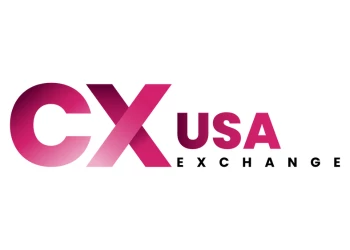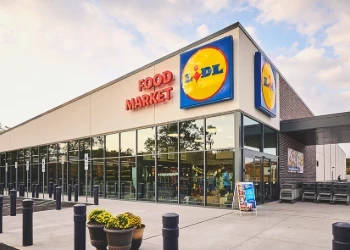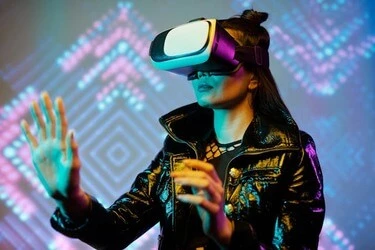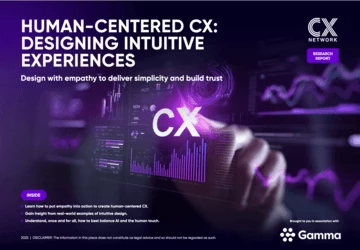4 retail brands in APAC using tech to enhance CX
Many retailers are struggling using AI to target tech-savvy Gen Z shoppers – but these four brands have tackled the challenges head on
Add bookmark
Retailers in the Asia-Pacific region are embracing technology at an unprecedented pace to meet evolving consumer expectations.
CX Network's 2024 Global State of CX report revealed how a number of trends are changing the role of practitioners in APAC, with the wave of technologies powered by artificial intelligence (AI) high among them.
Reflecting this, nearly every retailer surveyed for the KPMG and GS1 report Navigating the future of seamless commerce in Asia Pacific said they were either exploring or actively implementing AI. According to the report, technology is transforming customer experiences by delivering highly relevant and personalized services that resonate with consumers across APAC markets.
But challenges remain. Anson Bailey, head of consumer and retail for KPMG in Asia Pacific, told Retail Asia that many retailers are struggling with AI adoption as they target tech-savvy Gen Z shoppers. “Gen Z consumers are incredibly important... they’re demanding faster, more efficient customer service,” he explained.
However, Bailey added that there are many promising tech use cases in customer service, with AI providing a very fast and efficient way to understand and better serve the consumer.
Here, we explore how four retail brands across APAC are leveraging technology and AI to enhance customer experience and meet the challenges of an increasingly demanding retail landscape.

Don't miss any news, updates or insider tips from CX Network by getting them delivered to your inbox. Sign up to our newsletter and join our community of experts.
Woolworths: AI-powered space optimization
Australian grocery giant Woolworths is using artificial intelligence (AI) to optimize store space and drive profitability.
With 1,451 stores serving more than 22 million customers weekly, the retailer continuously remodels and refits its spaces to better align with local preferences and introduce new product lines. To streamline this process, Woolworths partnered with TCS to implement Optumera, an AI-powered platform.
Previously, the brand relied on manual processes for macro space planning, limiting its ability to be agile. However, Optumera analyzes data and makes space recommendations for product categories in seconds, allowing Woolworths to react faster to changing customer needs. The platform also includes a ‘what-if’ analysis feature, enabling the brand to simulate different scenarios and predict the impact of space decisions before implementation, reducing costly trial and error.
According to Doug Frank, general manager of data and retail analytics at Woolworths, the technology has transformed the brand’s approach, providing a “robust mechanism… to execute ‘always-on’ dynamic aisle optimization and constantly look out for opportunities”.
Zalora: AI-driven hyperpersonalization
Zalora, one of southeast Asia’s leading ecommerce fashion retailers, has turned to AI to deliver hyperpersonalized shopping experiences across its digital channels in Indonesia, Hong Kong, Malaysia, Philippines, Taiwan and Singapore.
With millions of visitors each month, the brand sought to provide real-time, tailored interactions at every stage of the customer journey. To achieve this, Zalora implemented Algonomy’s AI-powered platform, enabling hyperpersonalization across key touch points such as product recommendations, search results, and category pages.
The system uses real-time data to adjust to each shopper’s behavior, offering personalized homepages and recommendations for returning customers based on their past searches and purchases, while anonymous visitors receive suggestions tailored to in-session activity.
The platform also improves search functionality by boosting newly launched products and refining results based on user preferences. Personalized recommendations delivered through emails and notifications have also contributed to greater engagement with the brand, leading to increases in revenue per click.
Looking ahead, Zalora plans to further enhance its personalization efforts, including size-based product recommendations to help better manage inventory and meet customer needs more effectively.
Shiseido: AI and AR elevate CX
Shiseido, the Japan-based beauty brand with a strong presence in the APAC region, has also set out to deliver hyperpersonalized customer experiences, opting to use both AI and augmented reality (AR) in order to do so.
The brand has partnered with personalized AI and AR beauty platform Revieve to enhance both its digital and in-store services. Online, Shiseido uses Revieve’s AI platform to deliver personalized skincare recommendations based on real-time selfie analysis and customer questionnaires. The aim is to ensure that users receive tailored advice and product suggestions according to their unique skin profile.
In-store, Shiseido has introduced the “skin visualizer”, a touch-free smart mirror that assesses skin attributes such as moisture and texture. This device provides immediate, customized product recommendations, replicating the personalized online experience. This technology has been deployed in stores across more than 20 countries.
Revieve has focused heavily on the APAC market due to the high demand for tailored beauty solutions. The provider has extended its presence in southeast Asian markets, including Indonesia, Malaysia, Singapore, Thailand, and Vietnam, as well as India, where Health & Glow, Purplle and Myntra are among its clients.
Richie Liu, Revieve’s director of business development for APAC, told Cosmetics Design Asia: “Many companies in India are thinking about incorporating digital experiences in their websites. Also, there are many direct-to-consumer brands coming up in the country and their only channel is online. Thus, they want to leverage AI technology to better engage with their customers.”
Mitre 10: Enhancing customer experience with VoC
In an overhaul of its CX strategy, Mitre 10, one of New Zealand’s largest home improvement retailers, found its legacy net promoter score system lacked real-time insights and was ineffective in tracking in-store and online feedback.
Partnering with Ipsos, the brand implemented the ‘Your Say’ Voice of Customer (VoC) program using the Qualtrics XM platform.
The new system is able to capture customer behavior across multiple touch points including in-store, online, click and collect, and delivery. With features such as dashboards, a closed-loop system for resolving issues and Google Reviews integration, store teams can act on insights, celebrate positive feedback and improve customer service based on real-time data. CX metrics have been incorporated into KPIs, and VoC data drives cooperative store strategies.
According to Rachel Waller, VoC specialist for Mitre 10 NZ, with the quantity and quality of data the brand now has, confidence of further enhancing customer experience is high. She added: “We know the order of importance and where to focus. Best of all we can track the business initiatives designed to improve experience and report back on progress while keeping a close eye on emerging issues.”
Quick links
- 5 customer data developments changing CX in APAC
- Top 5 challenges facing CX practitioners - and how to overcome them
- 5 things to know about the state of CX in APAC in 2024




























